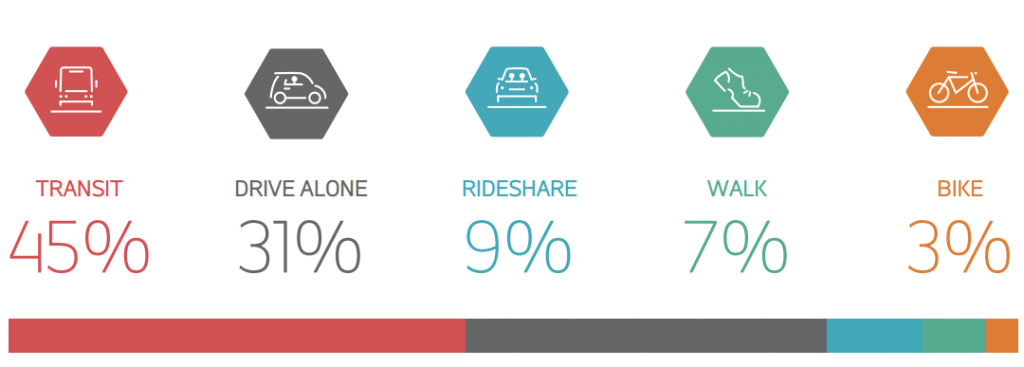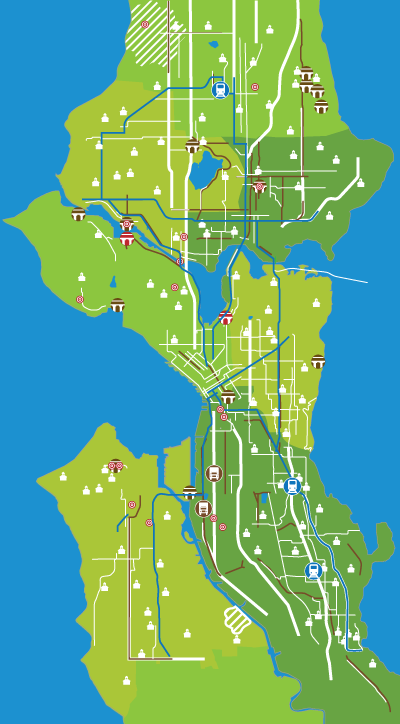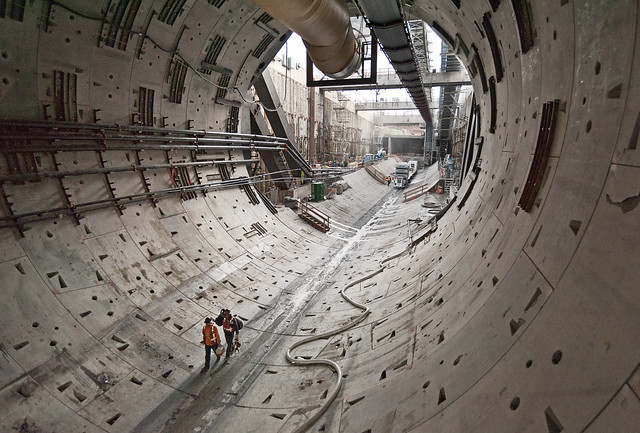Last week, The Seattle Times came out against Proposition 1 (a.k.a Move Seattle). Tom Fucoloro with the Seattle Bike Blog ripped The Seattle Times editorial board (STEB henceforth) to shreds for the unsoundness of their argument; you can read about the benefits of Move Seattle here, most of which the STEB overlooked. The editorial’s arguments are wrong on such an epic scale that it has to be digested in bits. Taken together as a whole, the absurdity is unbearably overwhelming, like looking straight into the sun. I’ve documented the inaccuracies, exaggerations, and red herrings in excruciating detail:
- The Seattle Times suggests Move Seattle is “an enormous request of taxpayers.” Actually, it asks the typical Seattle single-family household to pay an additional $12 more per month. And by the way, Seattle compares favorably with other major cities when it comes to property tax burden. Seattle is 41st out of 50 cities in overall tax burden, according to this CNN money breakdown.
- The STEB intuits that Move Seattle’s intentions are not clear. In reality, projects are laid out in meticulous detail in the 76 page plan. Planned projects include 50 miles of protected bike lanes, 150 blocks of new sidewalks, and $250 million toward the road maintenance backlog.
- The STEB insinuated there are no provisions for accountability when in fact, a citizen oversight panel is baked right into the proposal. Additionally, the budget cannot be shifted around from what is outlined by more than 10% without a city council vote.
- The STEB complains the $250 million for maintenance “barely puts a dent in the city’s nearly $2 billion maintenance backlog.” Surely a quarter billion is better than nothing, which is the alternative if this proposition does not pass. But would the STEB support a $2 billion levy to tackle the maintenance backlog or would it be too enormous of an ask?
- The STEB gripes Move Seattle does not address the Magnolia Bridge. But in all honesty, should this cherry-picked item be a high priority? Does that fact that some Magnolia residents don’t feel safe on a perfectly operational bridge justify a $300 million bridge replacement?
- The STEB complains Move Seattle doesn’t specify any safety improvements on the Aurora Bridge and argues a protective barrier would have prevented the tragic Ride the Ducks accident last month that killed four. However, is there any evidence that a meager concrete barrier would have actually stopped a WWII-era armored amphibious vehicle swerving sharply into oncoming traffic?
- The STEB argues Move Seattle wouldn’t do enough to solve the city’s intractable gridlock and lavish motorists with attention (lest we forget the quarter billion already earmarked for road maintenance). It points out that 81% of trips in the region are taken by car. This is a subtle and insidious trick. Using regional statistics to justify an investment paid for by Seattlites only should piss you off. Within Seattle, 63% of trips were by car in 2009 and for downtown workers only 31% drive alone compared to 45% who take transit, as we detailed previously. The Seattle Times wants the city to make itself more motorist friendly not really for its own sake but for its suburbs. The objective of Move Seattle isn’t to make it easier to drive a single occupant vehicle in from the exurbs. The point is to improve transit, biking and walking options in every neighborhood to provide a realistic alternative to driving.

Modal split for Downtown Seattle commute trips, courtesy of Commute Seattle. - The STEB thinks $13 million isn’t enough for traffic-light signalization. Would these budget hawks be more comfortable with much more expensive technology to perform the same task?
- The Seattle Times doesn’t like trees in the Emerald City, hinting $20 million for urban forestry is waste.
- The STEB repeatedly bemoans “the urbanist agenda” and we at The Urbanist note your derision and have to say, that really hurts. We don’t think of ourselves as outliers. The projects we support will help everyone — from kids walking or biking to school to bus riders hoping for a faster commute to elderly citizens hoping to get around without a car — whether or not they identify as urbanists. We live in this city, and the reason we walk, bike, or bus isn’t just ethics or style but because it’s practical and actually more convenient than dealing with Seattle traffic and parking for many destinations. Moreover, not all of us want to take on a the astronomical cost of owning a car.
- Even The Seattle Times can’t argue against Safe Routes to School, so they took a pass on this one.
- Similarly, STEB had to begrudgingly admit seven new Rapid Ride lines would be popular and a good idea that would speed up bus service.
- The “credibility gap” lies not with Move Seattle but with The Seattle Times editorial board. SDOT has a good track record on safety projects. The STEB has a poor track record on endorsing big transportation projects. Notice how the STEB don’t mention Bertha once because that’d undercut their credibility in light of the their endorsement of that $4 billion boondoggle.
- At least the delayed First Hill streetcar will begin operations soon. With Bertha we don’t even know if the tunnel boring machine will bore again successfully, let alone if the project will make its already much delayed 2018 timeline.
So there you have it in agonizing detail.
Fucoloro emphasized that the lack of big projects that The Seattle Times laments is precisely what makes Move Seattle such a dynamic and beneficial investment. Seattle has been enamored with megaprojects for too long while overlooking the crucial, smaller scale projects that knit communities together.
It’s time for Seattle to dedicate itself to all modes of transportation, not just driving. It’s time for Seattle to put its money where its mouth is when it comes to ending traffic deaths as planned in Vision Zero. It’s time to not just talk like a leading progressive city but to actually start acting like one. Vote Yes on Prop 1 and forever read The Seattle Times‘s editorials with a boulder of salt.
Doug Trumm is publisher of The Urbanist. An Urbanist writer since 2015, he dreams of pedestrian streets, bus lanes, and a mass-timber building spree to end our housing crisis. He graduated from the Evans School of Public Policy and Governance at the University of Washington in 2019. He lives in Seattle's Fremont neighborhood and loves to explore the city by foot and by bike.




